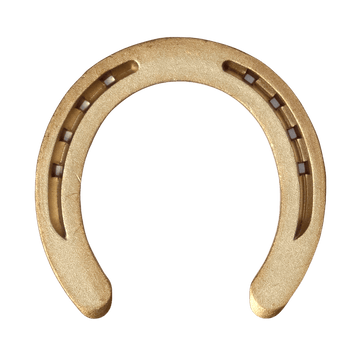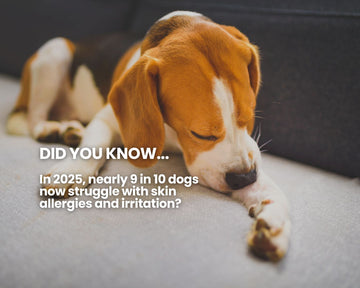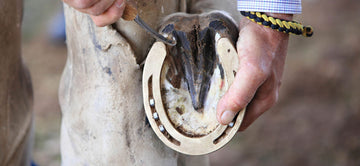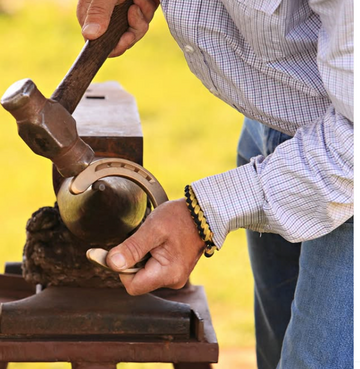Introduction to Equine Hair
Horse hair, found on the mane, tail, and body of a horse, is more than just a striking feature of these majestic animals. It serves functional, protective, and even aesthetic roles. The mane and tail hairs are especially long and coarse, offering protection against environmental elements and pests while also being central to a horse’s unique appearance.
Beyond the horse itself, equine hair has been used by humans for centuries in a variety of applications—from the creation of horsehair fabrics and violin bows to durable brushes and fishing lines.
Understanding the different types of horse hair and their purposes is essential not only for proper grooming and care but also for appreciating the cultural and practical value that horse hair has provided throughout history. Horsehair fabrics are particularly valued for their durability and easy care properties, making them ideal for high-quality upholstery and luxury items.
Whether you’re an equestrian, an artist, or simply someone interested in animal care, learning about horse hair can deepen your appreciation of these versatile animals.

Types of Horse Hair
Horse hair is categorized based on its location and function on a horse's body:
-
Mane Hair: Located along the top of the neck, mane hair is thick and coarse, providing protection against insects and rain.
-
Tail Hair: Longer and stronger than mane hair, the tail helps in swatting away flies and can be harvested for industrial use.
-
Body Hair: This covers the horse’s torso and limbs and plays a key role in thermoregulation and protection.
-
Tactile Hair: Also known as vibrissae, these are specialized sensory hairs found around the muzzle, eyes, and ears. They help horses navigate their environment, especially in low-light conditions.
Each of these hair types plays a vital role in the health, comfort, and function of the horse.
The Horse’s Mane
The mane is one of the most iconic features of a horse. Extending from the top of the head down the neck, it helps shield the horse from insects and rain. A thick, flowing mane can also provide insulation in colder climates.
The forelock, a vital part of the mane that hangs between a horse's ears, provides protection from weather elements and biting insects, and contributes to the horse's overall appearance.
Many horse owners choose to braid or trim their horse’s mane for practicality or aesthetics. Certain breeds are known for specific mane styles—think of the long, flowing manes of Friesians or the roached (clipped) manes of polo ponies. Regular maintenance, including detangling, conditioning, and trimming, is necessary to prevent matting and breakage.
A well-maintained mane not only looks beautiful but is also a sign of overall health, reflecting proper grooming and nutrition.

Functions of the Equine Coat
A horse’s coat serves as a protective barrier and a temperature regulator. Its primary functions include:
-
Thermoregulation: In cold weather, the coat grows thicker to retain body heat, helping to keep the horse's bodies warm, while in summer, horses shed to stay cool.
-
Protection: The coat protects against insect bites, minor abrasions, and sun exposure.
-
Sensory Input: Tactile hairs within the coat allow horses to detect their surroundings and feel even the smallest environmental changes.
Healthy coat maintenance depends on regular grooming, proper nutrition, and minimizing exposure to harmful weather conditions.
Health Benefits of a Healthy Coat
A healthy coat is more than just a sign of a well-groomed horse; it’s a crucial aspect of the animal’s overall well-being. The horse’s hair coat provides essential protection from the elements, biting insects, and other environmental factors.
The mane and tail hair, in particular, play a vital role in keeping flies and other insects away from sensitive areas like the horse’s eyes, ears, and nose, significantly reducing the risk of irritation and infection.
In addition to its protective functions, a healthy coat is key to regulating the horse’s body temperature. During colder months, the hair coat thickens to provide insulation, while in warmer weather, horses shed their coats to prevent overheating. This natural thermoregulation is vital for the horse’s comfort and health throughout the year.
The tactile hairs on a horse’s body, especially around the eyes, nose, and mouth, are highly sensitive. These hairs help the horse detect its surroundings, aiding in navigation and spatial awareness.
This sensitivity is particularly important in low-light conditions or unfamiliar environments, where tactile feedback can help the horse avoid obstacles and stay safe.
Regular grooming and care are essential for maintaining a healthy coat. Brushing helps to remove dirt and debris, distribute natural oils, and prevent skin irritations and infections. A shiny, lustrous coat often signifies good nutrition and overall health, reflecting the horse’s internal well-being.
Horsehair fabrics, made from the tail hair of live horses, have been used for centuries in fine arts, crafts, and even fishing lines, showcasing the versatility and value of horse hair. These fabrics are prized for their durability and unique texture, making them a staple in various traditional and modern applications.
Beyond its practical uses, a healthy coat enhances a horse’s beauty and appearance. A well-groomed coat, along with a flowing mane and tail, adds to the horse’s overall aesthetic appeal, making it a joy to behold.
Maintaining a horse’s coat requires regular brushing, grooming, and attention to the horse’s overall health. Factors such as nutrition, environment, and genetics all play a role in determining the health and quality of the coat.
By prioritizing the health and well-being of a horse’s coat, owners can promote the horse’s overall health, reduce the risk of health problems, and enhance the horse’s natural beauty and appearance.
Horse Tail Hair Uses
Horse tail hair is especially prized in various industries due to its strength and durability. Common uses include:
-
Brushes: High-quality artist brushes and industrial brushes often use horsehair for its resilient texture.
-
Musical Instruments: Violin and cello bows traditionally use horsehair to produce a specific tonal quality.
-
Fishing Lines: Historically, horsehair was used to make strong and flexible fishing lines.
-
Textiles: Horsehair fabric is woven for use in furniture, clothing accents, and sometimes in couture fashion.
-
Bracelets: Handcrafted bracelets made from horsehair showcase intricate weaving techniques and serve as unique personal keepsakes or gifts.
Due to the cost and labor involved in collecting and preparing horse tail hair, many of these products are considered luxury or specialty items.
Characteristics of Horse Hair
Horse hair has several notable characteristics that contribute to its versatility:
-
Durability: It’s naturally resistant to wear and doesn’t easily break or fray.
-
Elasticity: Horse hair can bend and return to its original shape, making it ideal for use in bows and brushes.
-
Workability: It can be dyed, woven, braided, or spun, offering a range of applications.
-
Aesthetic Appeal: Its natural sheen and rich texture make it a popular material for decorative items like jewelry and hatbands.
-
Sensory Function: Nerve endings associated with tactile hairs on the muzzle and ears play an important sensory role, contributing to the horse's overall well-being.
Breed, age, and health all affect the texture, length, and thickness of a horse’s hair, contributing to the variation seen in different horses.
Equine Hair in History and Culture
Horse hair has been used for centuries across the globe. In ancient China and Europe, it was incorporated into military gear, including helmet linings and banners. Native American cultures used horsehair for beadwork and traditional crafts.
Horsehair fabric became popular in Victorian England, especially for upholstery, due to its stiffness and durability. Today, vintage furniture with original horsehair upholstery is highly prized.
Artisans in New Mexico utilize horse hair for traditional crafts, showcasing the region's unique craftsmanship.
Culturally, horse hair symbolizes strength, grace, and tradition, and its use is often passed down in artisan practices.

Horse Care and Management
To maintain the beauty and health of a horse’s hair, consistent grooming is key. This includes:
-
Brushing: Regular brushing keeps the coat clean and distributes natural oils. Using your fingers can help effectively separate tangles and debris from the mane.
-
Washing: Occasional bathing helps remove deep dirt and buildup. Make sure to use a horse-specific shampoo when washing.
-
Braiding: Especially useful for managing long manes and tails, braiding prevents tangling.
-
Nutrition: A diet rich in omega-3 fatty acids, biotin, and protein supports healthy hair growth.
-
Fly Protection: Using fly sprays or physical barriers like fly masks helps reduce hair damage from excessive tail swishing.
Additionally, maintaining a regular schedule with your farrier and veterinarian helps ensure the overall wellness of the horse, which directly impacts the condition of their coat and hair.
Industrial Applications of Horse Hair
Horse hair is used in a variety of industrial applications due to its strength and flexibility:
-
Furniture and Upholstery: Horsehair-stuffed furniture was once a hallmark of quality craftsmanship.
-
Textile Manufacturing: Horsehair can be woven into stiff, breathable fabrics used in dressmaking and interior design.
-
Fine Brushes: Horsehair remains a favored material in high-end paintbrushes and polishing tools.
-
Instrument Crafting: Bow makers for stringed instruments still prefer genuine horsehair for its unique tonal qualities.
-
Jewelry Making: Horsehair is also used to create unique items such as necklaces, showcasing its versatility and appeal in artisan crafts.
Although synthetic alternatives exist, many artisans and industries continue to use horsehair for its unmatched natural properties.
Environmental Factors Affecting Horse Hair
Climate and environment play a large role in the health of a horse’s hair. Humidity, dust, and UV exposure can dry out and damage the hair, while excessive cold can cause brittleness. During winter, a horse's coat becomes thicker and denser to provide better insulation and warmth.
To counter these effects:
-
Sheltering: Providing adequate shelter during extreme weather is crucial.
-
Grooming: Daily grooming helps remove environmental debris and encourages healthy growth.
-
Protection: Fly sheets, masks, and sunscreen-safe products protect sensitive hair and skin areas.
Knowing your horse’s environment and adjusting your grooming and care practices accordingly helps maintain a beautiful, functional coat year-round.
Frequently Asked Questions
Do horses have hair or fur?
Horses have hair, not fur. While “fur” generally refers to shorter, denser coats found in other mammals, a horse’s coat consists of longer individual hairs.
In contrast, the fur of dogs is typically shorter and denser, which helps them maintain body heat in cold environments.
What is horsehair fabric called?
Horsehair fabric is commonly referred to as “horsehair cloth.” It is a stiff textile often used in upholstery and high-end fashion detailing.
What can horsehair be used for?
Horsehair can be used for brushes, bowstrings for stringed instruments, fishing lines, jewelry, fabric, and even traditional craftsmanship such as wig making.
Additionally, horsehair is often used to create realistic eyelashes for dolls and other crafts.
Is hair called a mane?
Hair along the top of a horse’s neck is called a mane. The tail refers to the long hair growing from the tailbone, while the rest of the body is covered by coat hair.
Conclusion
Horse hair is more than just a feature of a horse’s appearance—it’s a vital component of equine health, function, and even human culture. From protecting the animal’s body and aiding in sensory perception to being woven into beautiful and functional products, horse hair plays a significant role in both the animal world and various industries.
By understanding the different types, functions, and uses of horse hair, horse owners and enthusiasts alike can better appreciate its importance.
With proper grooming, nutrition, and environmental care, a horse’s hair can remain strong, beautiful, and useful—whether on the horse or in the skilled hands of an artisan.










